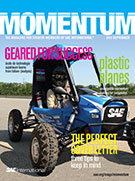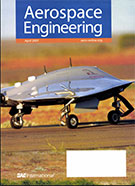Magazine

Tech Briefs: May 2018
2018-05-01
New Technologies Tackle UAV Challenges Robotic Applique Kits Leverage Existing Assets Educating UGVs Implementing AI Advancements in Thermal Image Training Data Sets Protecting Critical Data on Unmanned Underwater Platforms Advancements Made to the Wingman Software-in-the-Loop (SIL) Simulation: How to Operate the SIL New features include the creation of virtual environments that match real-world gunnery test courses. Soldier-Robot Team Communication: An Investigation of Exogenous Orienting Visual Display Cues and Robot Reporting Preferences The effective use of robots to conduct dangerous missions depends on accurate man-machine communications. Soft Robotic Fish Swims Alongside Real Ones in Coral Reefs GPS Enabled Semi-Autonomous Robot Combining GPS signals with acoustic and encoder data gives a robot the ability to determine its location and orientation within a reference frame.



















